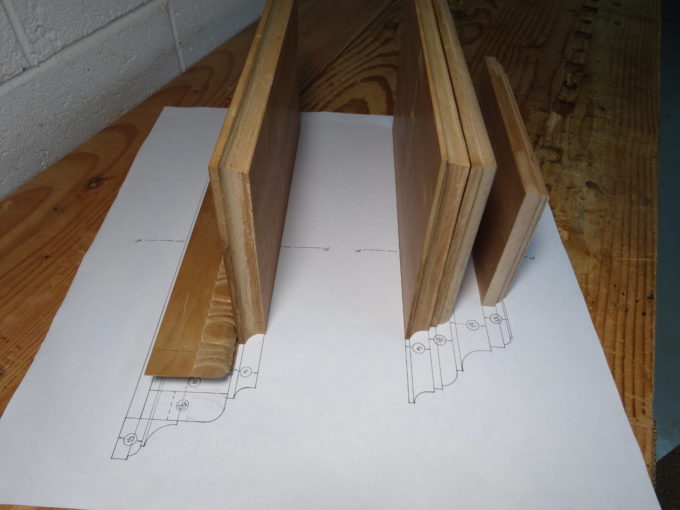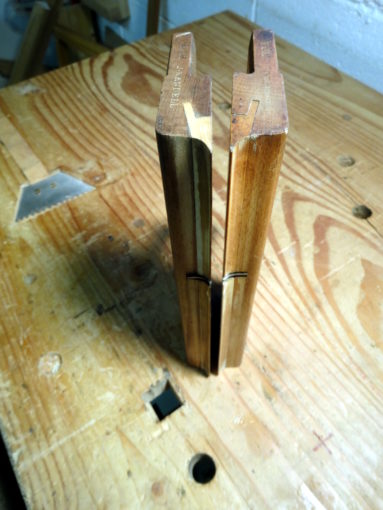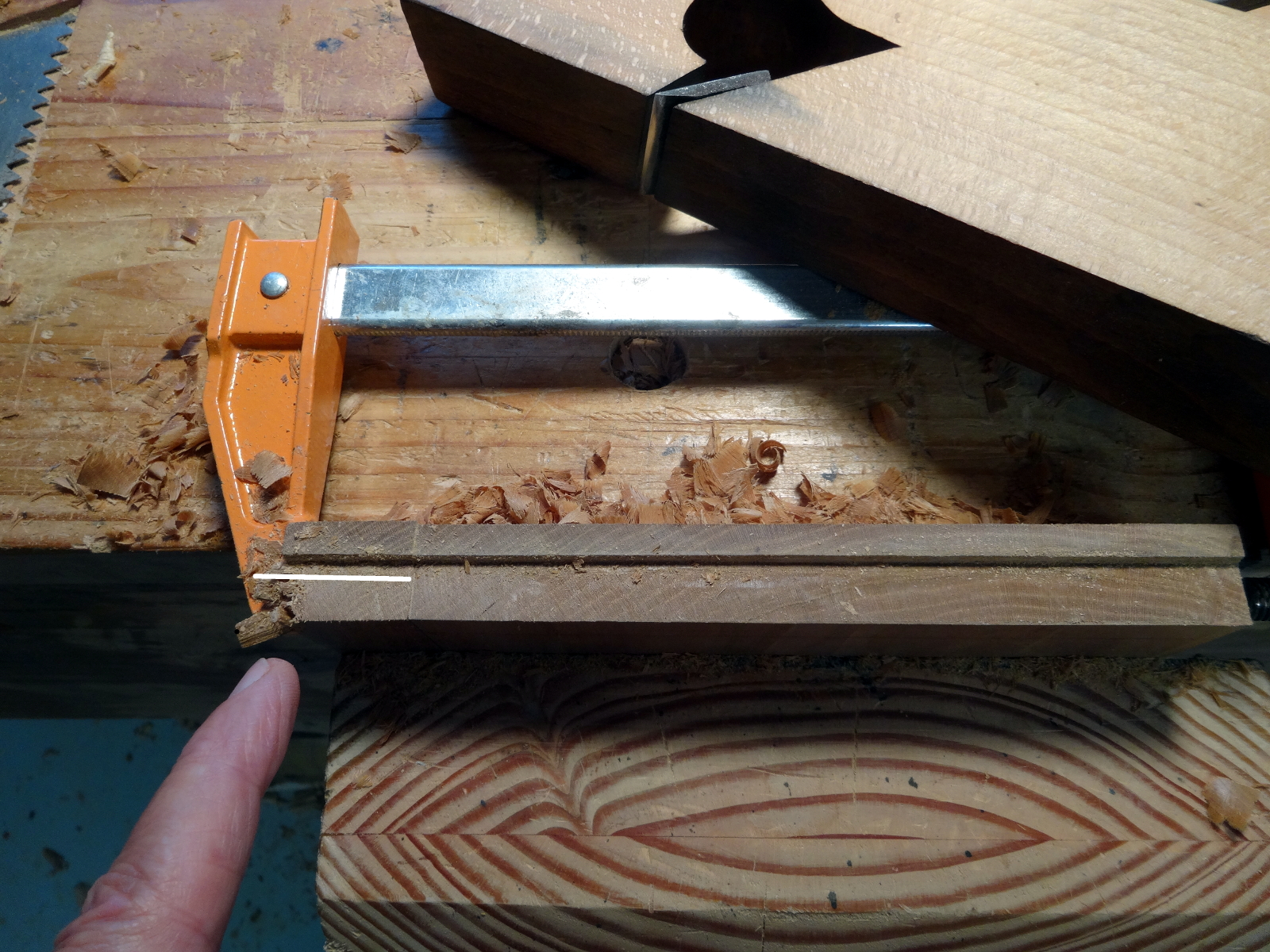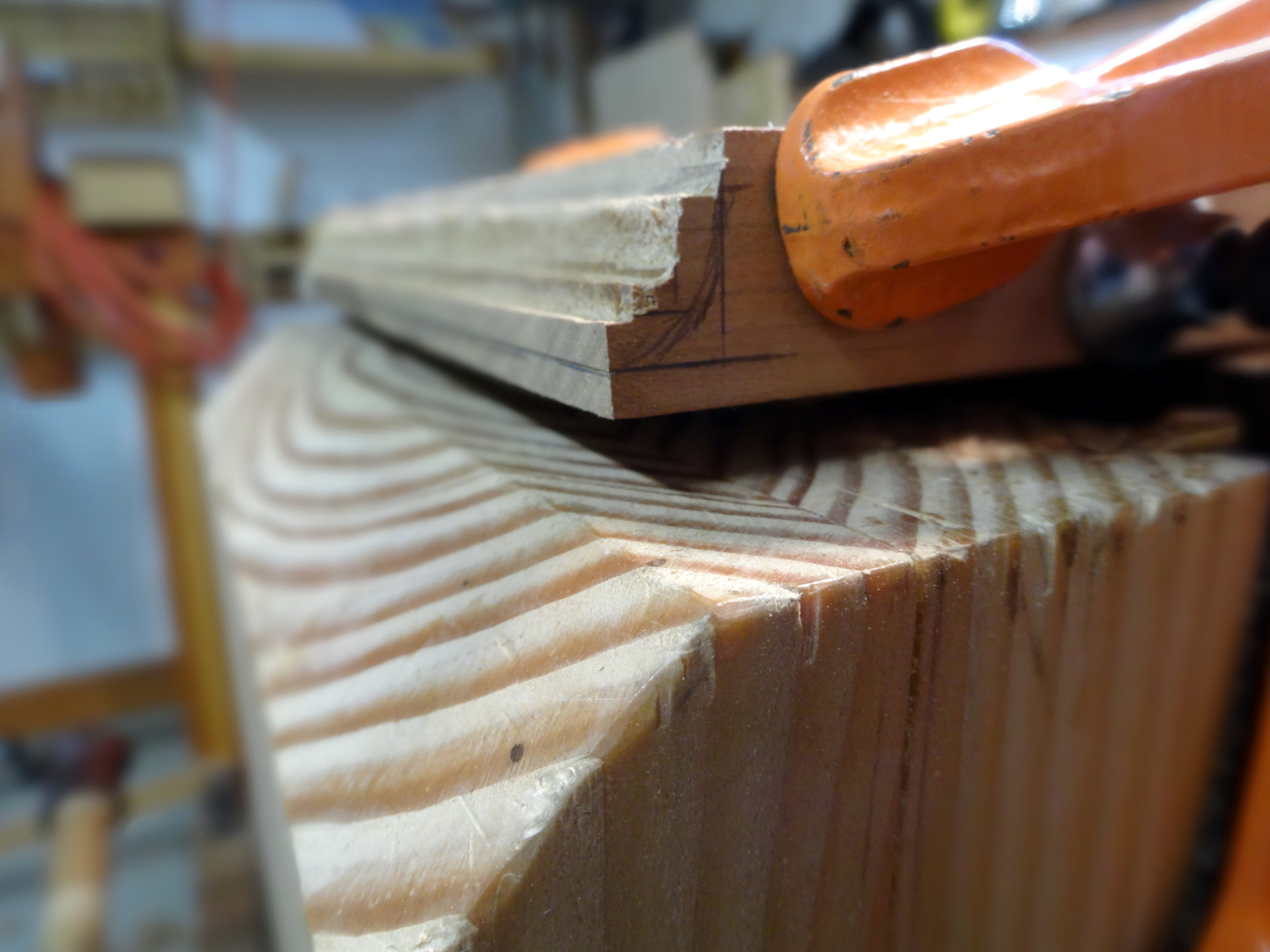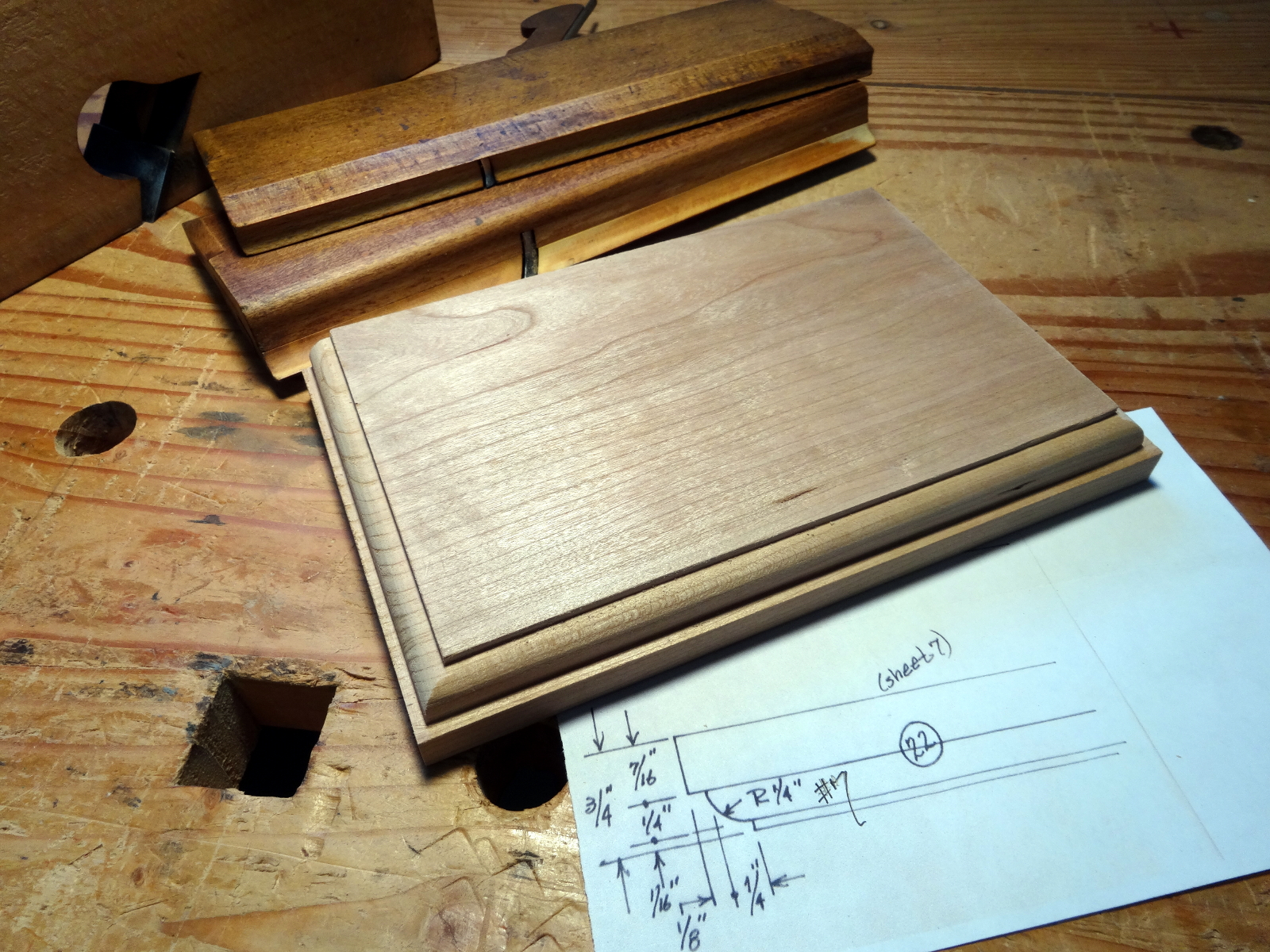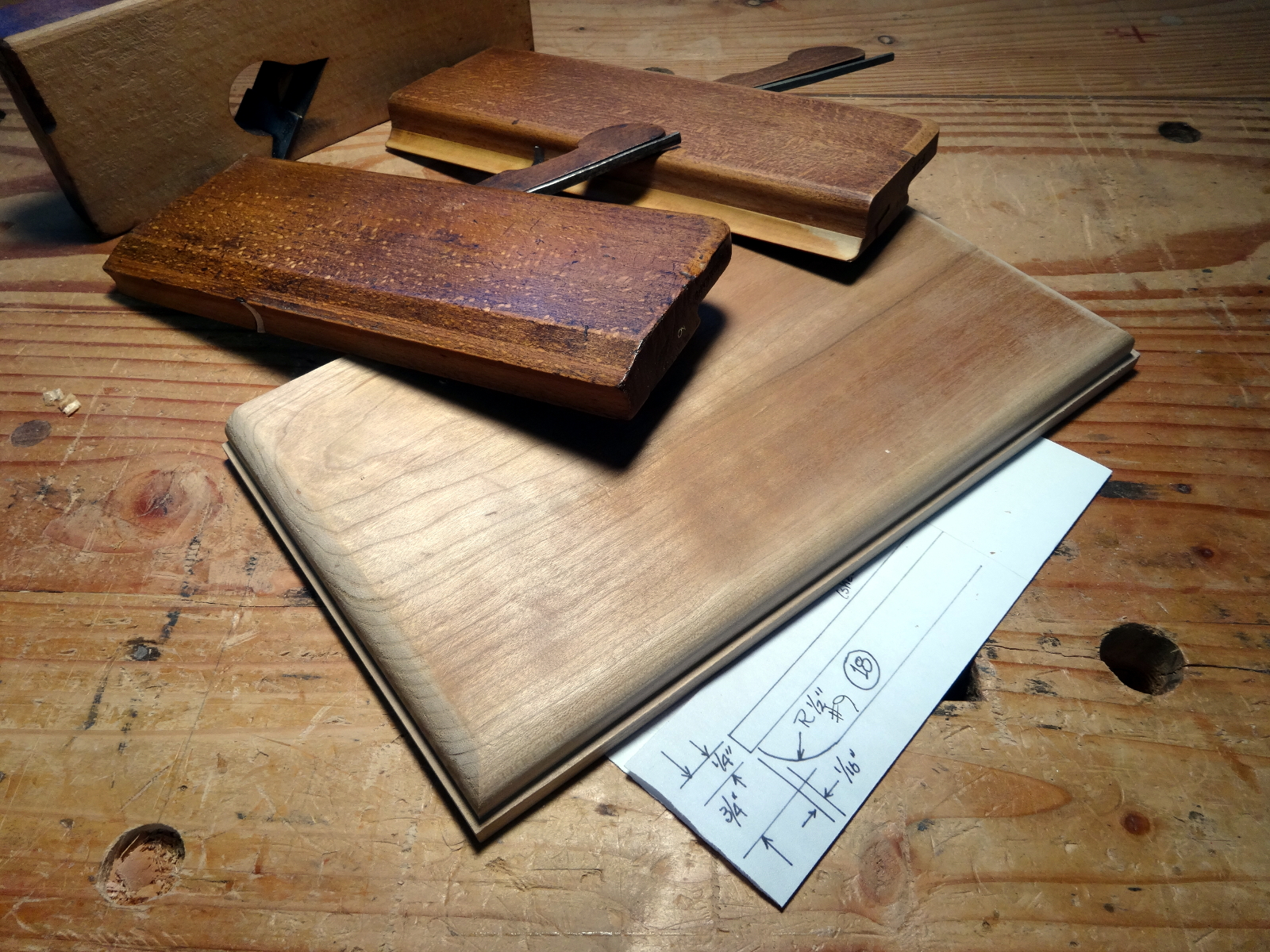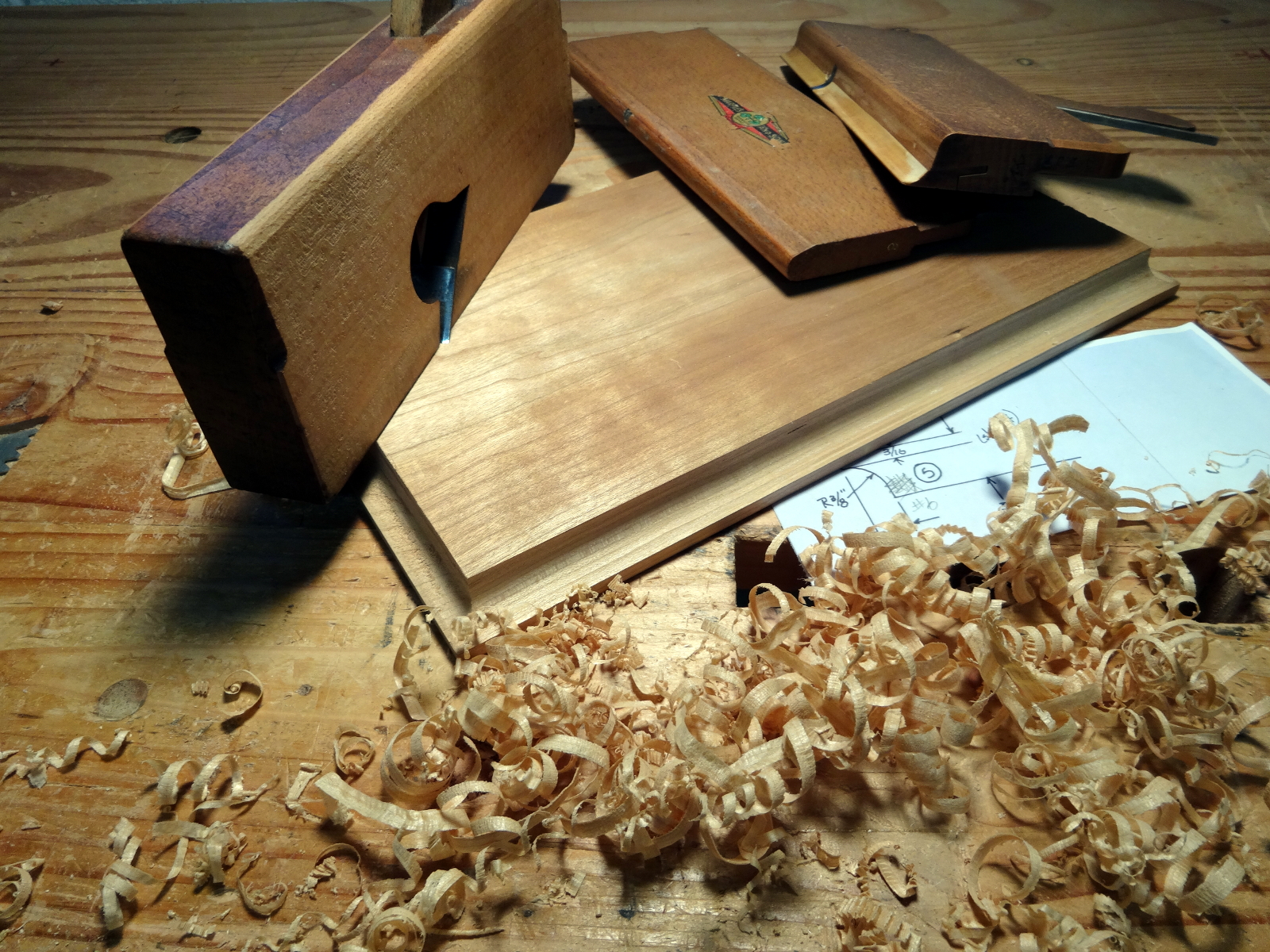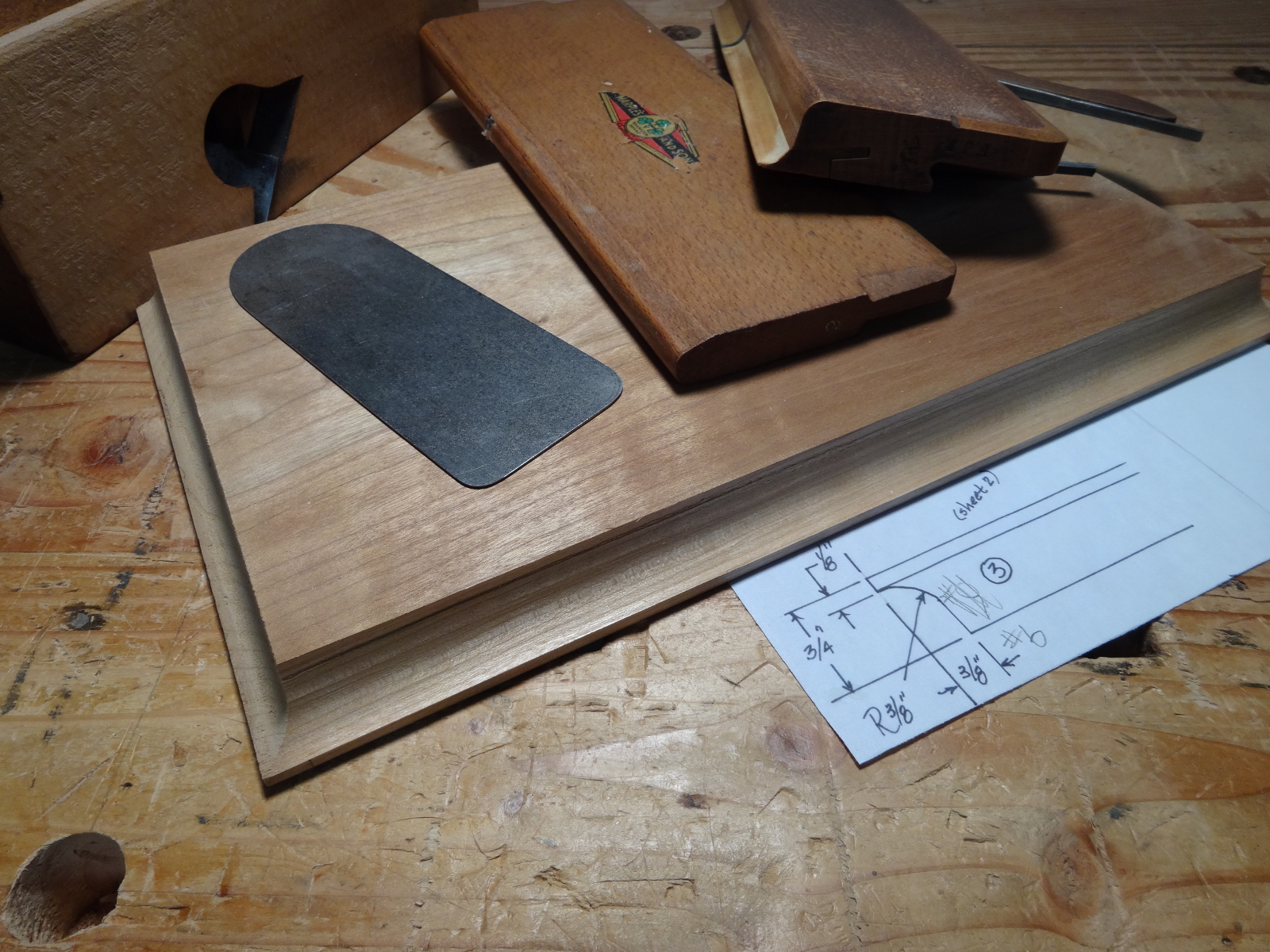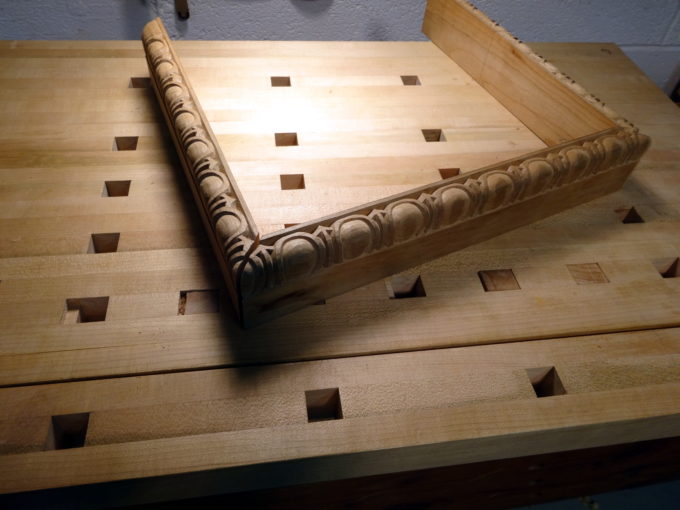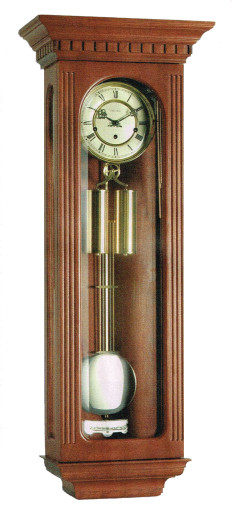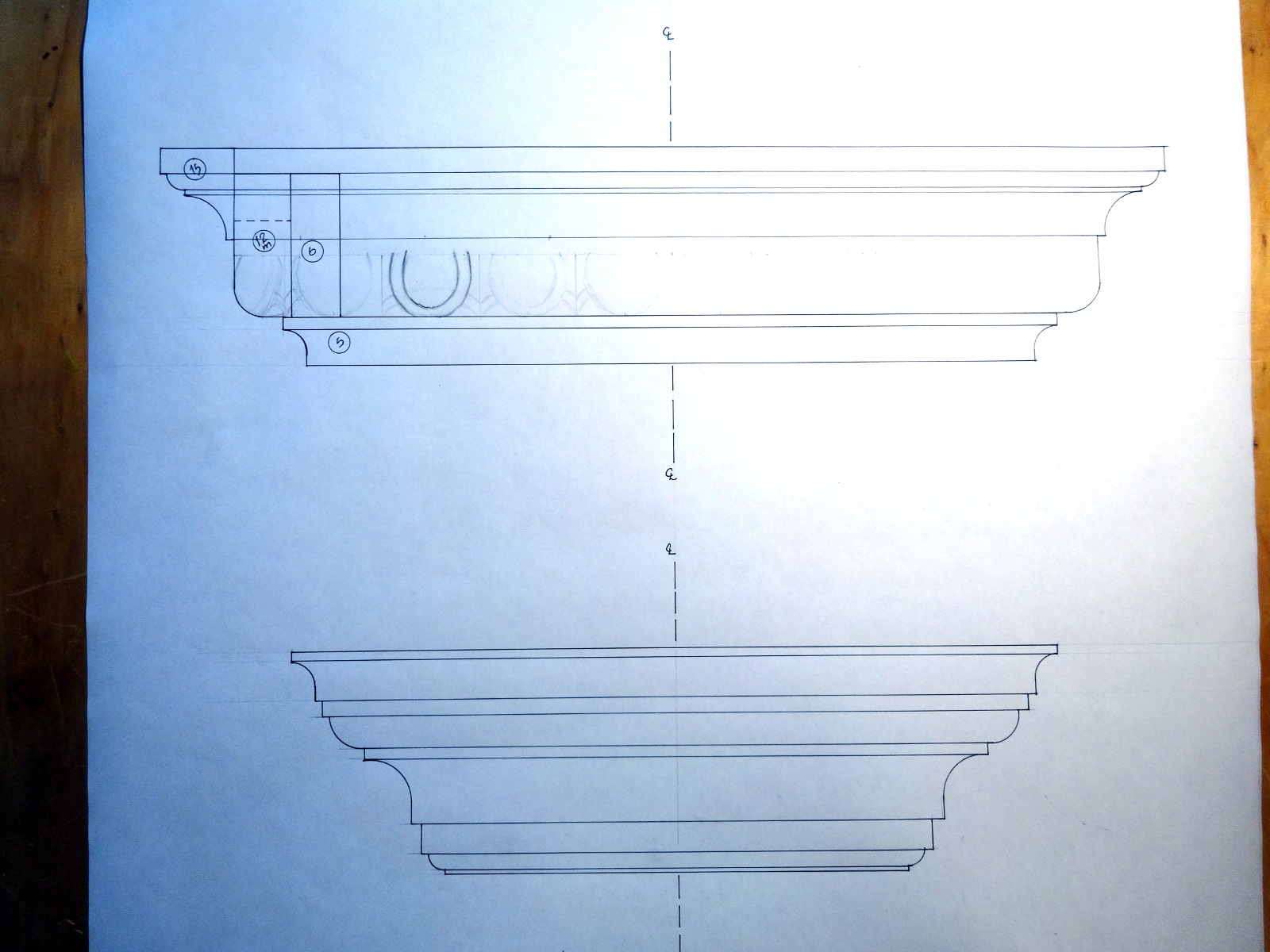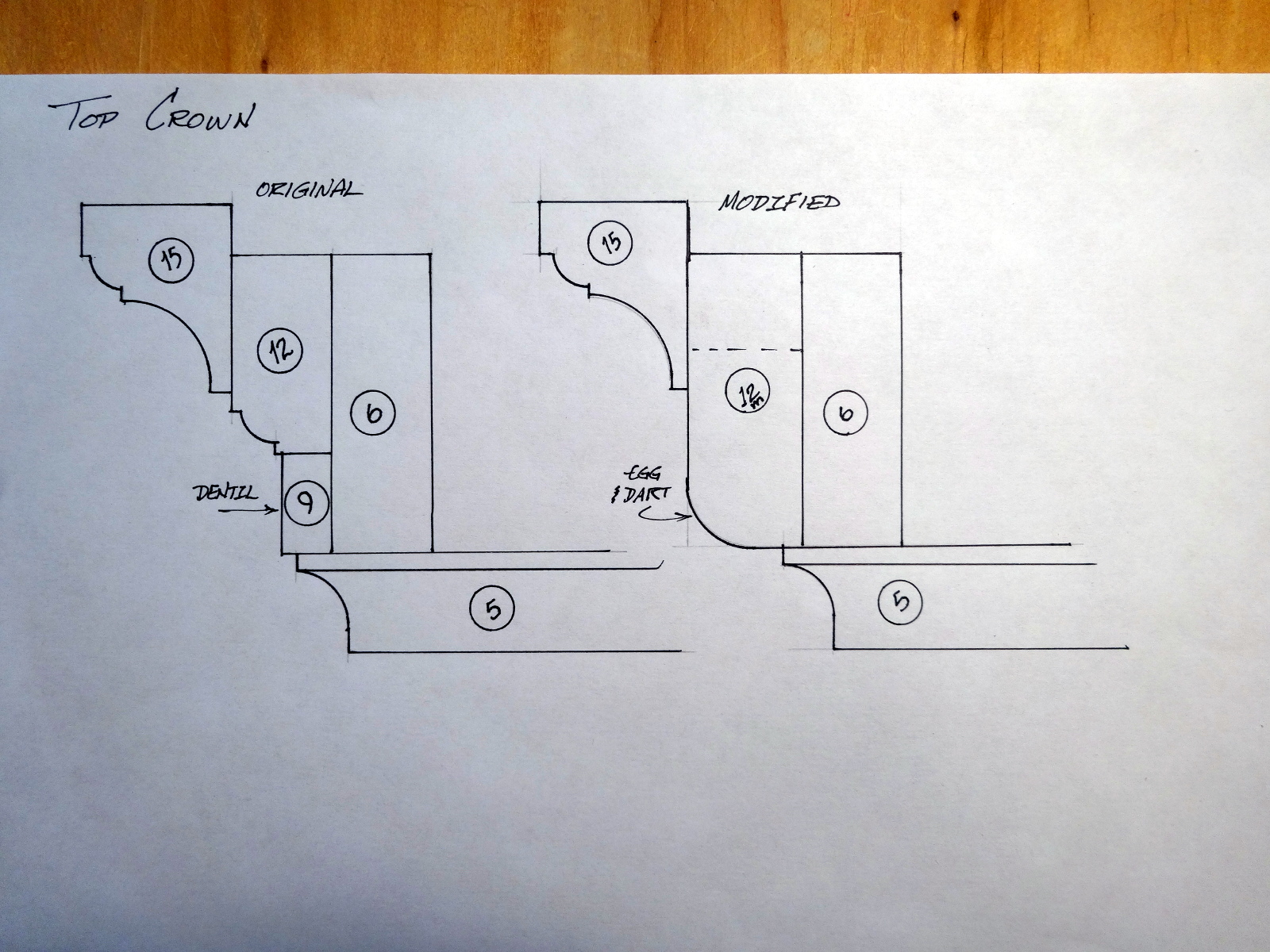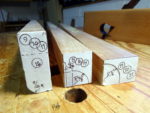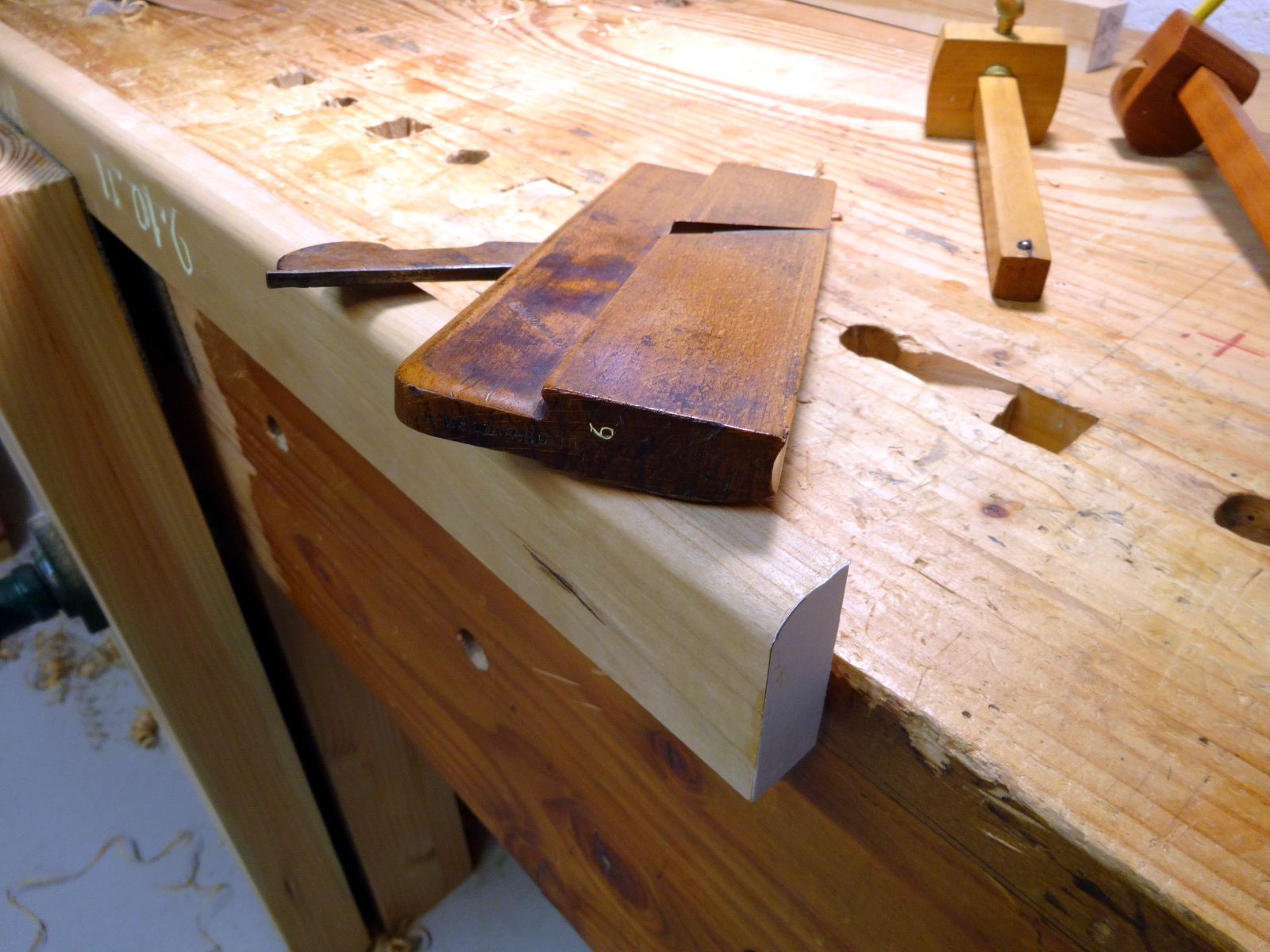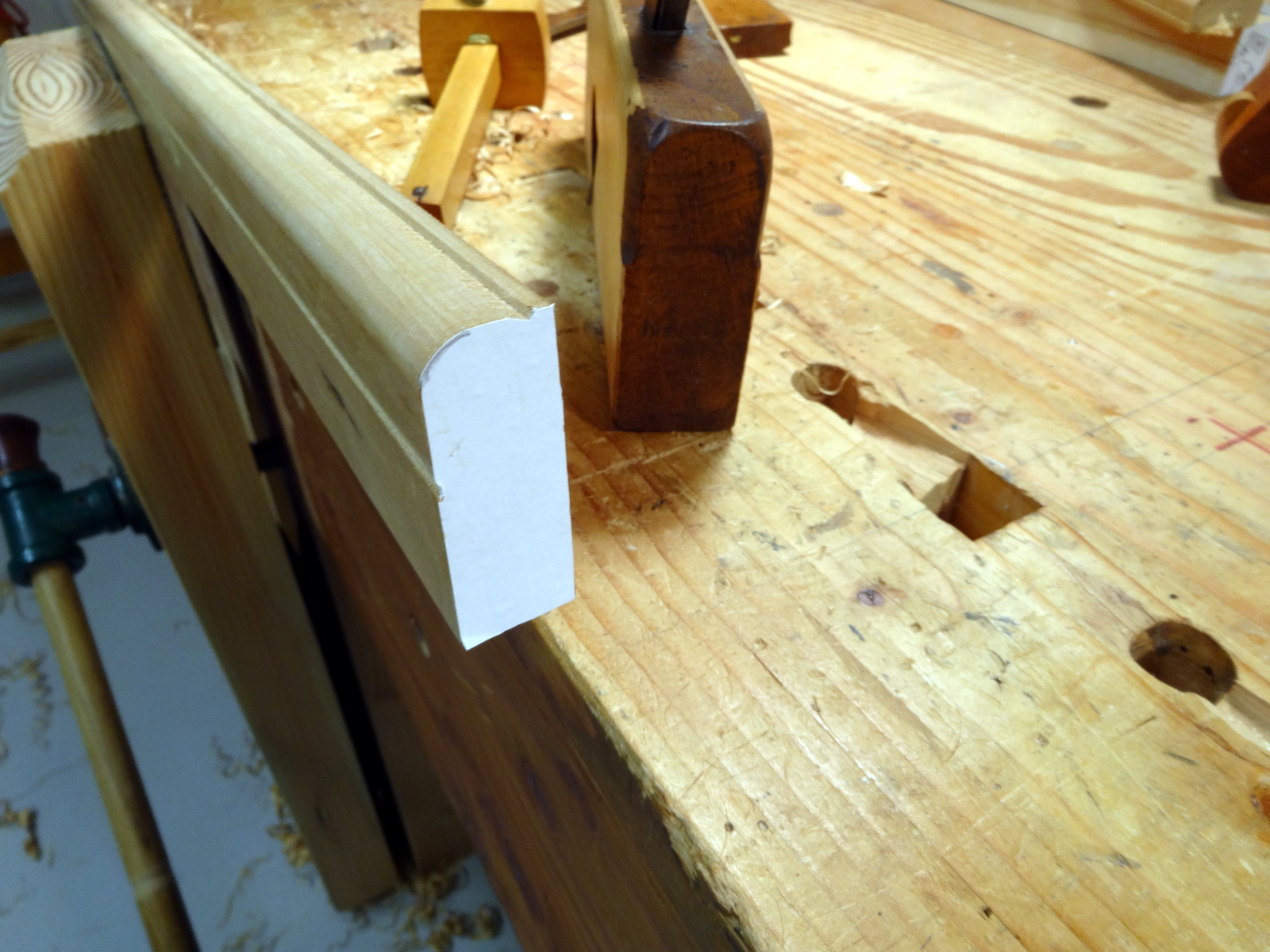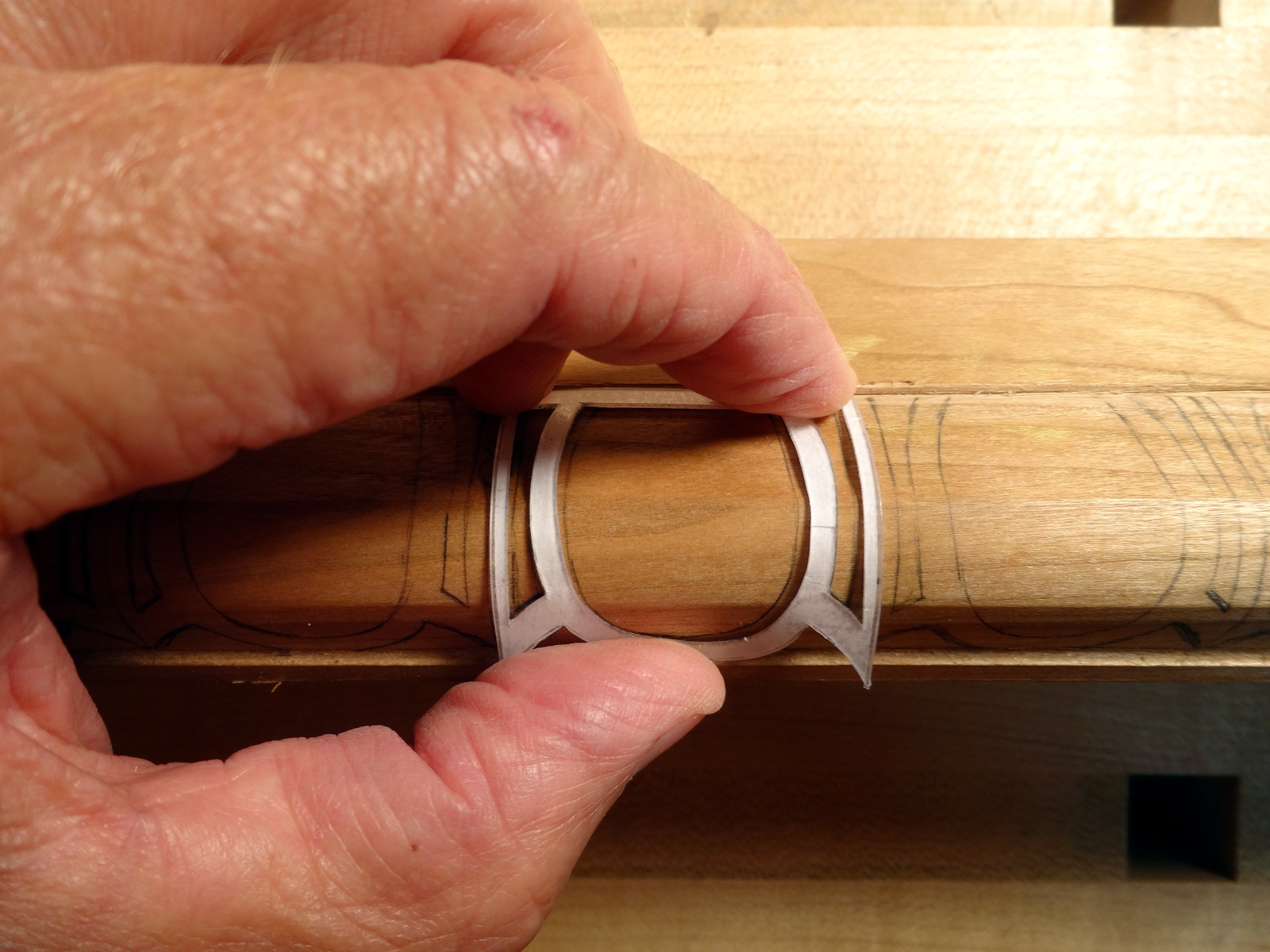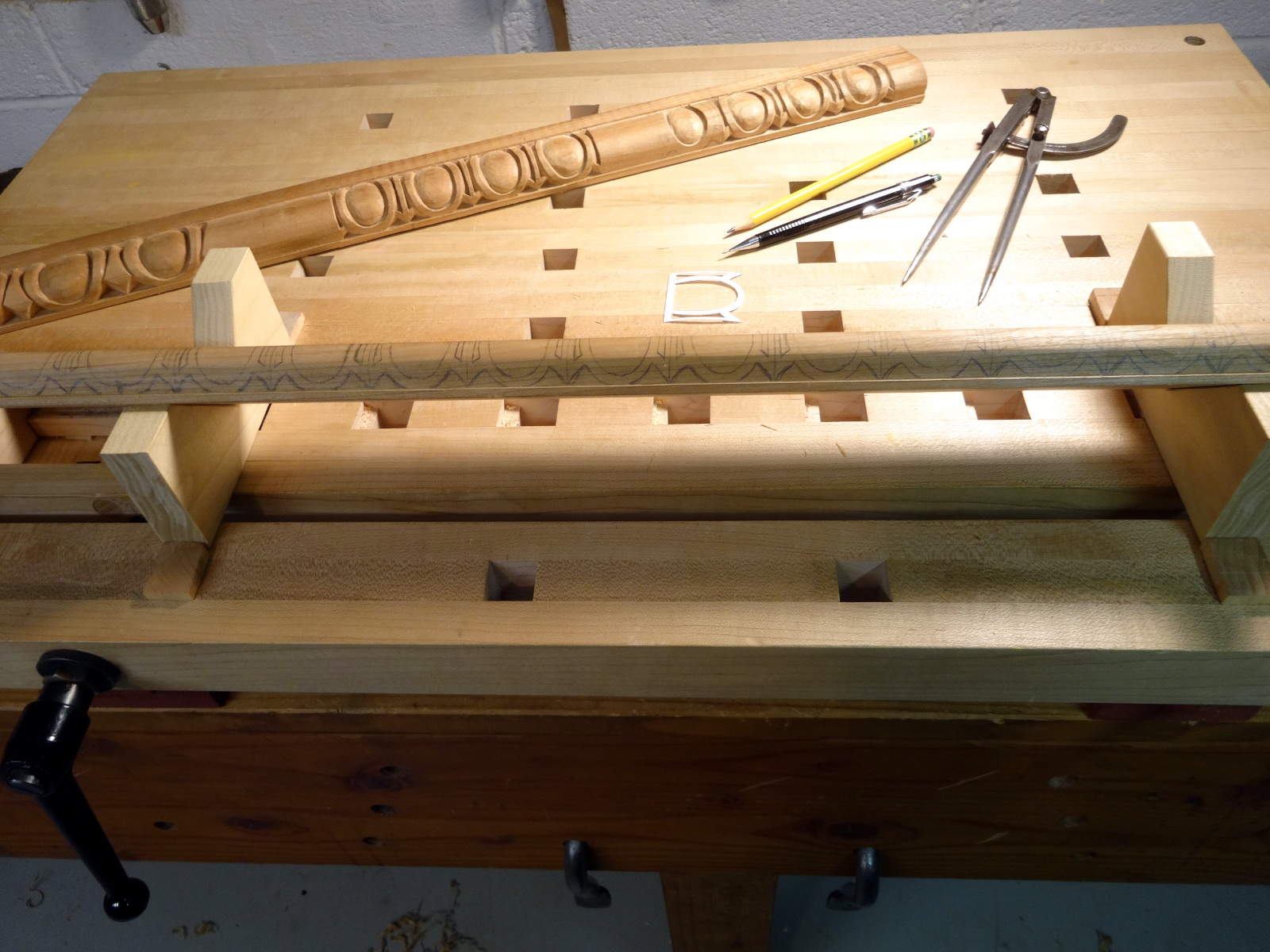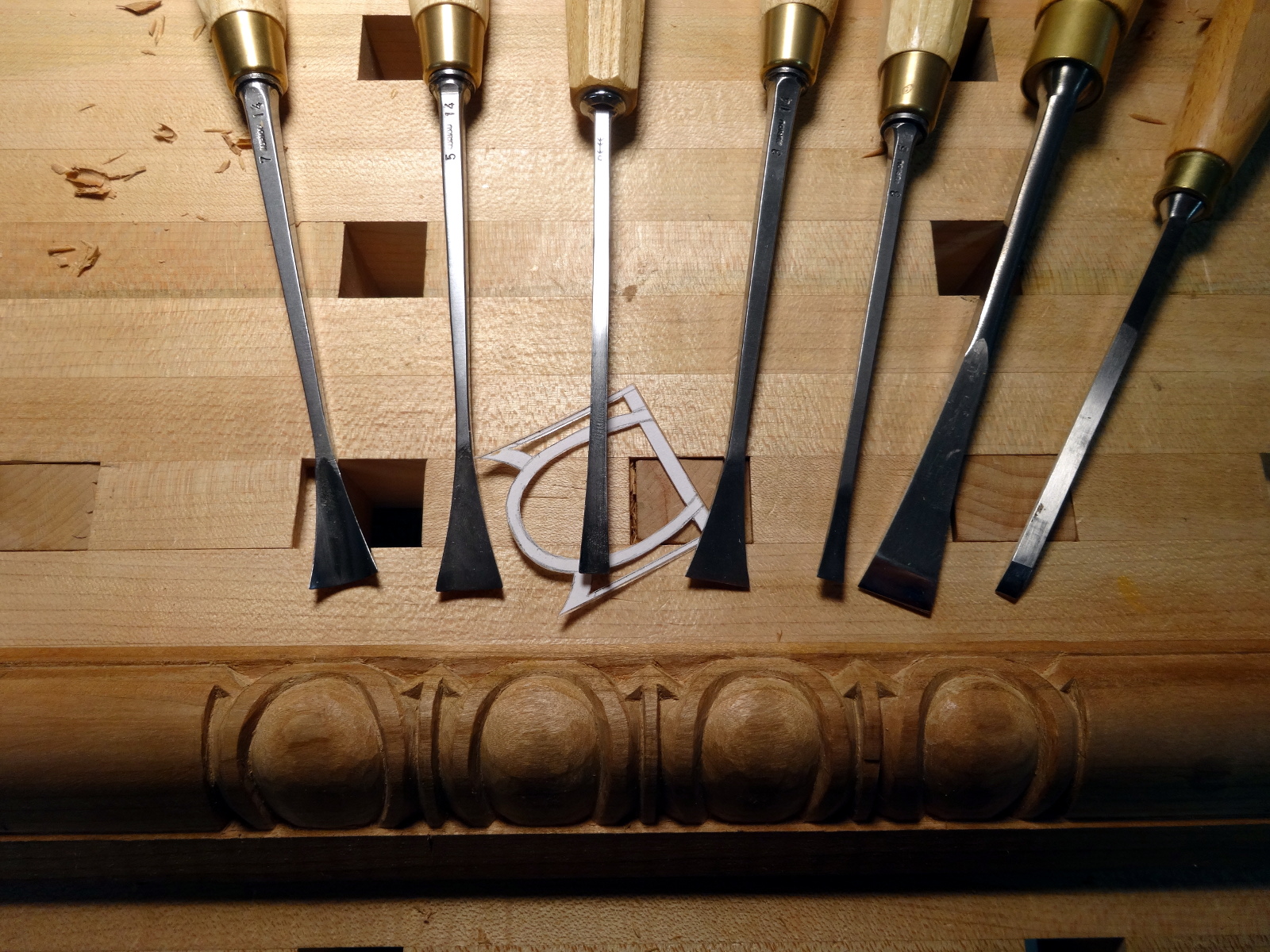Gratitude: Snipes-bill panes.
Four “runs” of mouldings for this clock are on plates (boards), not sticks. Those four, and a stick of egg and dart, are shown here. Only two sticks of mouldings remain to be shaped.
Mouldings on these boards gives us the challenge of shaping mouldings on end grain edges. Counter to what some people think, hollows and rounds can indeed work cross grain and on end grain. They need only to be well sharpened.
The only precaution I took with cross grain planing was clamping a sacrificial strip to one edge for blowout prevention. Let the sacrificial piece be blown out, chewed up (picture in the gallery below).
Matthew Bickford in his book and DVD advocates using rebates to guide rounds, and chamfers to guide hollows. That technique does two important things. (1) most of the heavy waste removal is done by a rabbet plane which is much easier to sharpen than the hollows or rounds. That means less sharpening for the difficult irons. (2) The arrises of the rabbets and chamfers act as steering for the rounds and hollows.
Starting rabbets is a challenge. My previous method was to make a line with a marking gauge, and as Bickford shows, use a tilted rabbet plane riding in that mark to start the rabbet. With subsequent passes rotate the rabbet plane upright for the correct cut. It works, but requires a very sharp arris on the right side of the rabbet plane and great amount of care for the first few passes.
I’ve found a better way. I haven’t yet had a use for snipes-bill planes and had not acquired any. … until I learned (again from Bickford) that the snipes-bill will easily follow a line from a marking gauge. Bingo! While I would love to have brand new planes from Bickford, my budget sent me off to my favorite tool monger, Patrick Leach. A few days later, a pair of very serviceable antique snipes-bill planes arrived. A little cleaning and sharpening, and they are working well. Not only can they follow a cut left by a marking gauge, they can, if one is careful, follow a knife line. About 3 passes to establish a quirk, then a couple of passes with the tilted rabbet plane, and then full speed ahead with the upright rabbet. Life is fine!
Using rabbets works well until a profile needs something more than 60 degrees of arc. If a single rabbet is used for the 90 degree coves on pieces #3 and #5, the rabbet’s arrises are too far apart to guide the appropriate round plane. The answer is to use two smaller rabbets and then work back and forth between them. Works great!
Pieces # 3 and #5 are the structural top and bottom of the clock case. They will each be given a pair of mortises and a rabbet in the back to accommodate the case sides and back. I’ll wait until after that work to refine the moulding shapes. For that work, I’ll use a scraper with curved corners that I made from a scrap of an old saw plate.
Other articles in this series…
- Regulator Clock – Done
- Regulator Clock – Woodworking completed
- Regulator Clock – Scratching the frames
- Regulator Clock – Door Hinged
- Regulator Clock – Case Dry Fitted
- Regulator Clock – Jelly Side Down
- Regulator Clock – Case Frames – 2
- Regulator Clock – Glass – 2
- Regulator Clock – Case Frames – 1
- Regulator Clock – The Works work
- Regulator Clock – Glass
- Regulator Clock – Tongue & Groove planes
- Regulator Clock – Completed Mouldings
- Regulator Clock – Stick Mouldings
- Regulator Clock – Plate Mouldings
- Regulator Clock – Egg and Dart Moulding
- Regulator Clock – Eat Dessert First
- Regulator Clock – original description
- Regulator Clock – Stock Prep
- Regulator Clock – Plans for Moldings
- Taming the Rabbet
